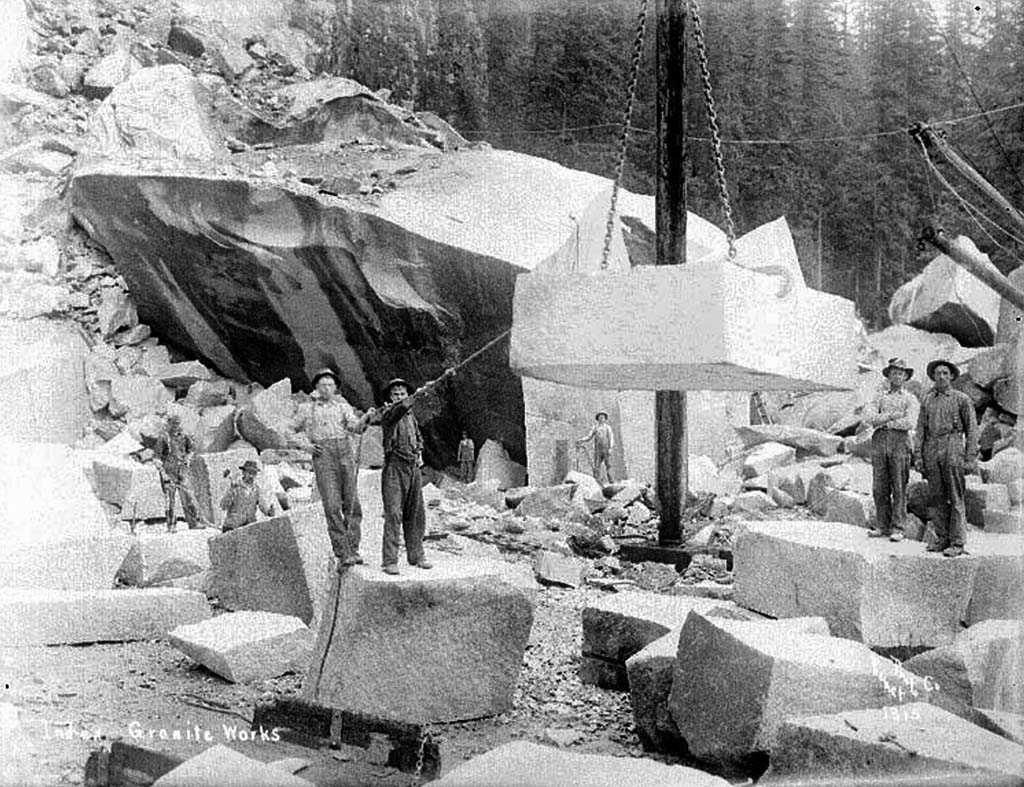Overview:
At GZ, you’ll see a series of granite arches on the Harbor Steps northeast tower. These giant blocks were saved from the Erickson Building (1903), which was taken down to build the third phase of Harbor Steps (late 90s). Originally, this granite traveled to this site in 1903 from a quarry near Skykomish, in the Index mining district, to complete the facade and footings of the new Erickson Building. When the time came to tear down the older building, the Harbor Steps team agreed that the stone should be saved and reused. A portion of the remaining granite was rebuilt as the arches you see here.
Interestingly, this same granite is used to curb Seattle streets and as the foundation for the state capitol in Olympia.

Description:
The oldest rocks in the Index mining district are interbedded quartzites, marbles, cherts, slates, and schists that have been intruded by granodiorite. The granodiorite comprises most of the bedrock in the district and at the time of its intrusion the overlying rocks were greatly faulted and tilted to angles ranging from a few degrees to the vertical.
The youngest material in the district is made up of glacial sands, clays, and gravels.
The Index Granite Quarry produced ornamental stone, riprap, and poultry grit. This granite is light colored, medium grained, biotite-bearing hornblende granite. An examination of thin section under the microscope from this locality shows the rock to be composed principally of quartz, feldspar, and hornblende, with a little biotite. The grains are of medium and fairly uniform size. Feldspar is the most abundant constituent, composing from two-thirds to three-fourths at least of the entire rock. The hornblende is much more abundant than the biotite. The feldspar is almost pure white with occasionally a very slight pinkish tinge which is not marked enough to have any influence on the color of the rock. The color of this rock is a light gray produced by a blending of the light colored feldspar and the black hornblende.
The minerals all have very irregular outlines and interlock in an intricate manner. Many of the feldspars show very plainly the zonal structure, due probably to weathering, while others again show transverse markings, which are due to weathering along the transverse seams in the crystals.
To log this Earthcache:
Please answer the following questions and then proceed with your log. Anyone who doesn't submit answers to the questions in a timely manner will have their logs deleted without notice.
-
Is this granite susceptible to weathering? Do you see any signs of discoloration or wear? Describe.
-
Describe an example of feldspar you see in the rock. What color is it? What’s the average size and location?
-
Describe an example of hornblende you see in the rock. What color is it? What’s the average size and location?
Bonus:
-
Where did the other portion of the Erickson Building granite end up?
References:
Congrats to DM&K Cachers on the FTF!